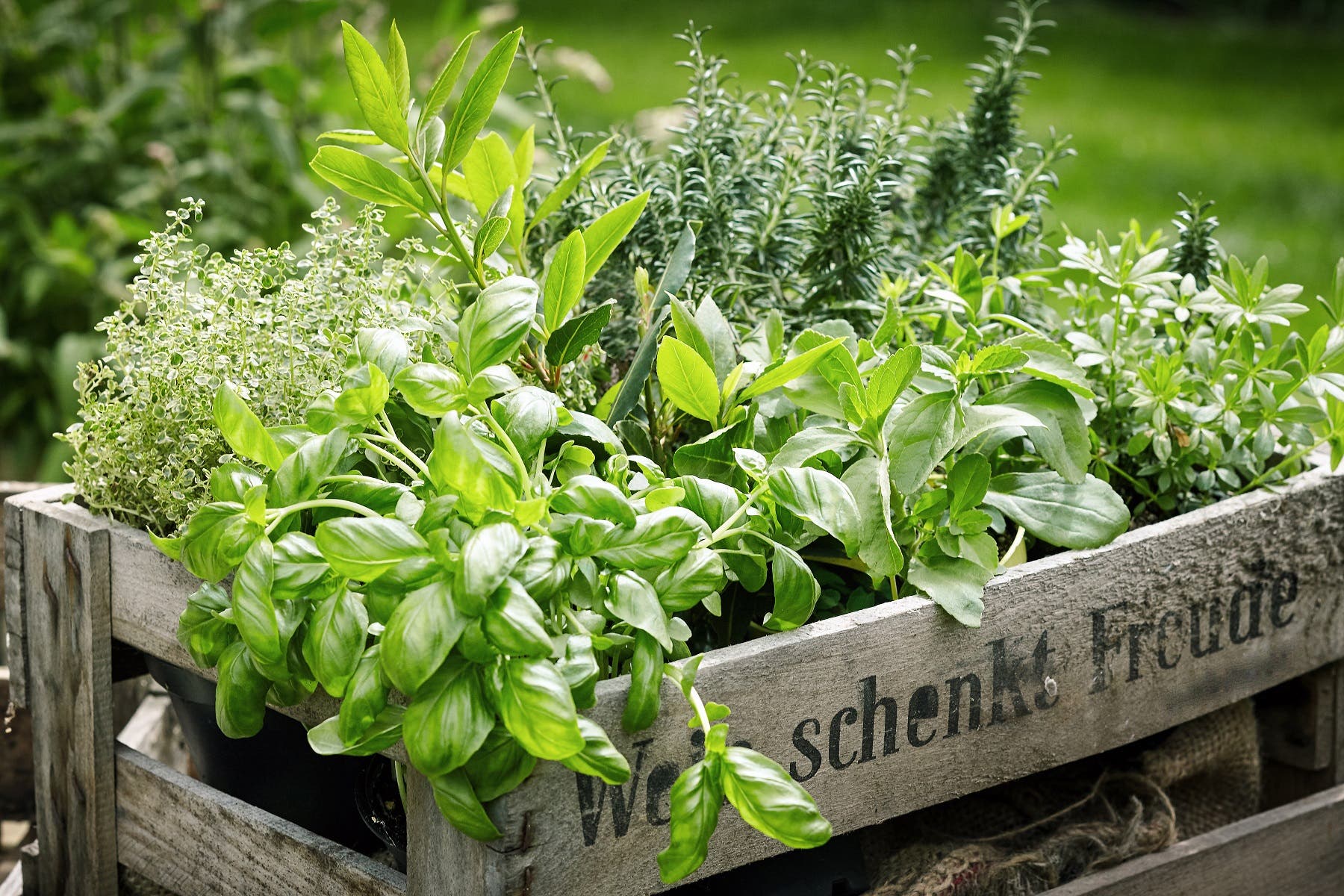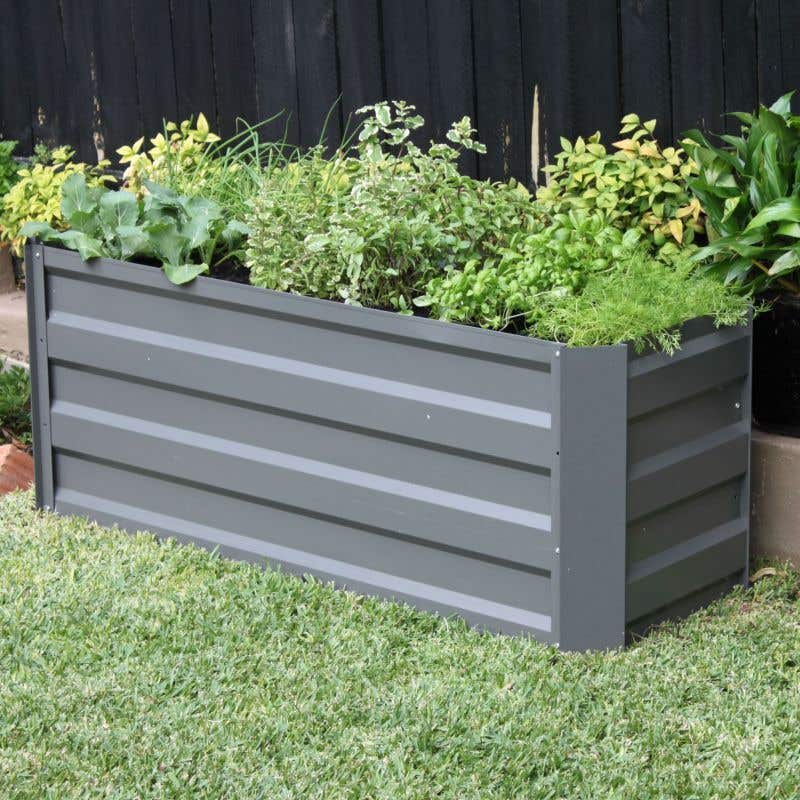How to Grow Your Own Herbs
Always wanted to grow your own produce? Start with herbs! You don’t need a big garden as they can be planted in a pot or through a small veggie garden, and you can harvest them almost immediately!
Be sure to check out the tips below to help ensure your success!

Where to plant your herbs
When setting your herb patch, choose an area that is well-drained (not an area of the garden where the soil holds water or that is at the bottom of the slope). If the only spot you have that is suitable doesn’t have good quality soil, you can easily build the bed up with sleepers, rocks or bricks or get one of our garden beds! That way, you can add more soil and compost, improving the soil’s friability and drainage at the same time.
When digging the existing soil over to remove weeds, add some pelletised poultry manure to enrich nutrient levels in the soil before planting.
When planting out your herbs, leave adequate space between them for future growth. Check labels for height and width so you can space and position appropriately. Taller growing herbs should be placed at the rear of the area so as not to shade out smaller herbs as they grow.
Many herbs have decorative foliage and flowers, so why not treat the area as a decorative garden bed and plant it out accordingly, rather than just planting one of everything. You could plant attractive drifts or groups of the one herb in the bed, then add a hedge of herbs, like rosemary. In the foreground, as a border planting golden or green oregano looks wonderful. Try mixing in a few flowers for looks as well as edible petals, like nasturtiums and calendulas.

No room for a specific herb garden?
Try planting herbs amongst your other plants. As long as they are in a sunny position and they are planted with non-invasive, smaller plants, your herbs won’t mind at all.
Keep them well-fed and watered though as herbs are fast and furious growers and do best when they receive adequate watering, mulch and a light feed every now and again.
Herbs in pots?
Don’t use tiny pots to grow your herbs in; larger pots are better as they hold more moisture and nutrients for the vigorous roots – and you won’t go as mad in summer trying to stop them drying out!
Nearly all herbs grow happily in pots but make sure you use a quality Terracotta and a tub potting mix because poor quality mixes (and solid mixes) will not promote the vigorous tip growth you are aiming for.
There are lots of decorative troughs and planters to choose and you can put more than one herb variety in a pot.
Tip: watch out for any herb in the mint family, they are so vigorous that they can swamp out the other plants in your herb planter or garden. It’s best to confine mints to their own pots, restricting their roving nature and giving your other herbs space to grow.
Herbs look great in pots, and if using Terracotta, seal them first with a spray-on Terracotta sealer. When selecting pots for your herb collection, choose pots with varying heights and arrange them in decorative groups.
Many of the large bowl style planters are suitable for herbs and look great. “Strawberry pots” or pots with pockets, are a popular choice for herbs be careful, they can grow out quickly and don’t provide much growing room so choose only small growing herbs.

Harvesting Herbs
The best way to harvest herbs is often. Taking those fresh looking tips from the herbs is the best way to stimulate new growth.
Leafy plants like oregano, basil, thyme, sage all benefit from constant tip pruning or picking. With chives, you can be ruthless, treat them like grass and “mow” them with a pair of scissors to leave a tuft. They’ll thicken and re-grow quickly. Even if you don’t need the herbs, prune and your plants will be better looking bushier plants.
Rinse the herbs and you are ready to use them in your culinary creation. If you are used to using bought dry herbs from jars you’ll find that you can use lots more herbs if they’re fresh.
With some herbs, there is more to use than just leaves. Coriander for example has wonderful roots and seeds. You can harvest and use herb seeds by collecting them in a brown paper bag (tied over the finished flower heads). The roots are also easily harvested by the plant up like a carrot. Wash the root well and chop very finely for a very pungent flavour.
Things to watch out for
Pests
From time to time you may notice a few aphids or caterpillars that can be pulled or “squirted” off with the hose. There are safe sprays available to use if these methods aren’t effective against your infestation.
Running to seed
Gardeners often worry that their herbs, particularly coriander, run to seed too quickly or “bolt” – when your herbs put on a vertical growth spurt to flower and set seed before they are ready for harvest.
It’s wise to pick herbs often and try to stop them “bolting”, as the flavour of many herbs is not as good once this happens.
Try to keep your herbs evenly moist and growing vigorously. In poor, dry or otherwise tough conditions plants are far more likely to run to seed, as they feel a need to reproduce themselves quickly before they die. In some cases, excessive fertilizing can also cause plants to run to seed.
Invasive Herbs
Watch out for creeping, running or vigorous herbs that will take over the garden or planter. The mint family is renowned for becoming rampant so one to its own pot is the best idea. Be warned, once they are planted they can be near impossible to get rid of from the garden. Try a large planter, wine barrel or even a bin if you’d like to grow lots of mint without the chance it will take over.
More Mighty Helpful Hints
- Your herb garden should, at the very least, receive 6 hours of sun a day.
- When planting out your herbs, leave adequate space between them for future growth.
- Don’t use tiny pots to grow your herbs in. Larger pots are better as they hold more moisture and nutrients.
- Taking fresh-looking tips from the herbs is the best way to stimulate new growth.
- You can store herbs easily in the freezer – just rinse, shake off excess water, and pop into cling film or a glass jar.
- Watch out for creeping, running or vigorous herbs that will take over the garden or planter.
There you have it! You now have what it takes to grow your own herbs!
If you have any more questions, come talk to one of our garden experts and get some herbs along the way, at Clennett’s Mitre 10 Kingston and Huonville!

